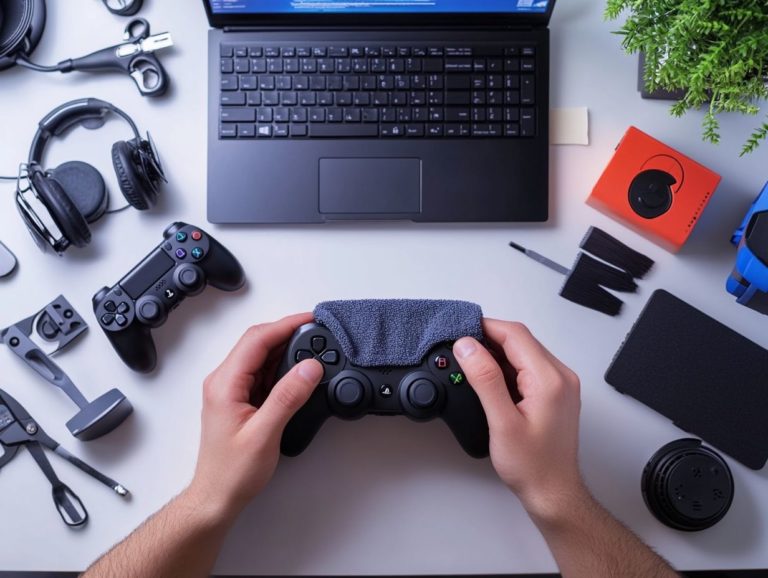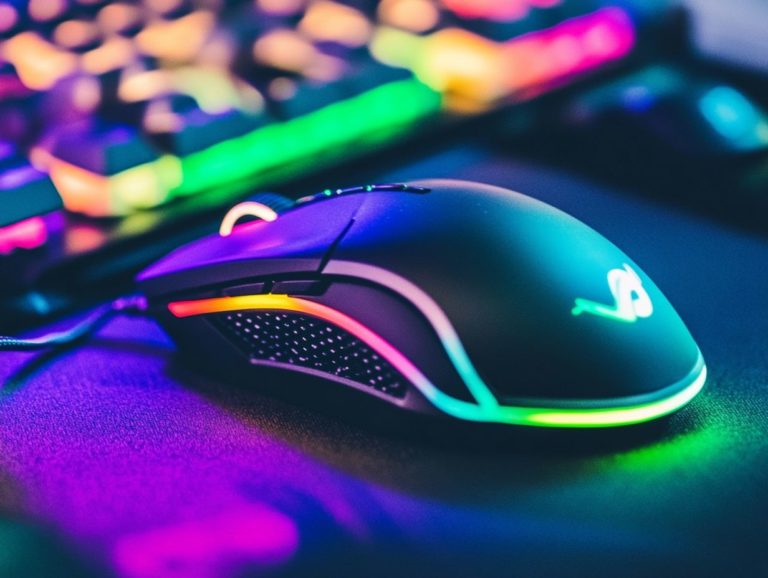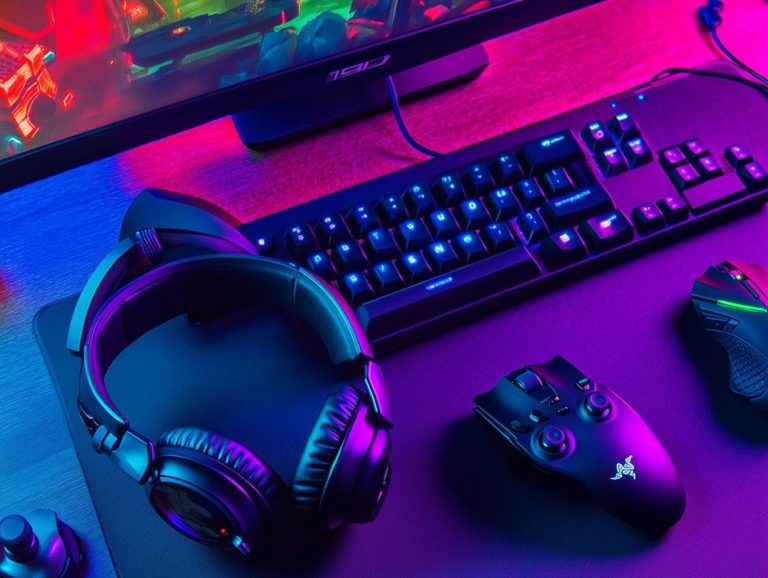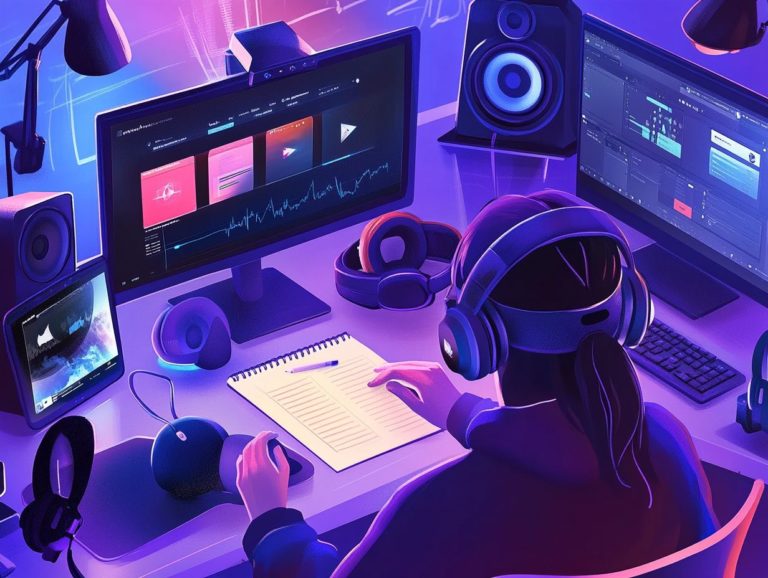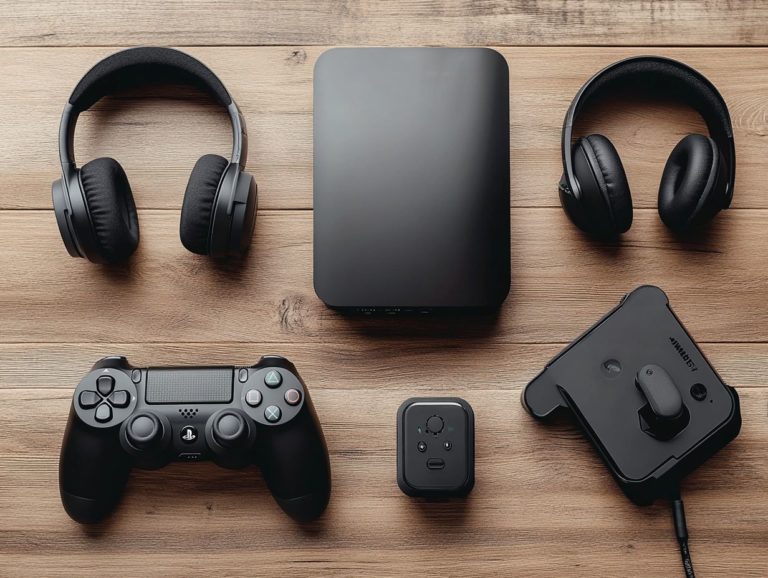what is vr equipment and how does it work?
Virtual Reality (VR) equipment is revolutionizing your digital content experience, immersing you in engaging experiences that truly engage your senses.
This article delves into what VR is all about and explores the various types of VR gear available, from headsets to controllers and tracking systems.
You ll discover how these technologies operate, examine their applications across different industries, and gain insights on how to choose the right equipment tailored to your needs.
Whether you re a gamer, a professional, or just someone with a curious mind, this guide will unlock the thrilling world of VR awaiting your exploration.
Contents
Key Takeaways:
- VR equipment creates a virtual reality experience.
- It uses components like headsets and controllers for immersion.
- Types of VR technology vary in features and uses.
- Consider compatibility, cost, and intended use before buying.
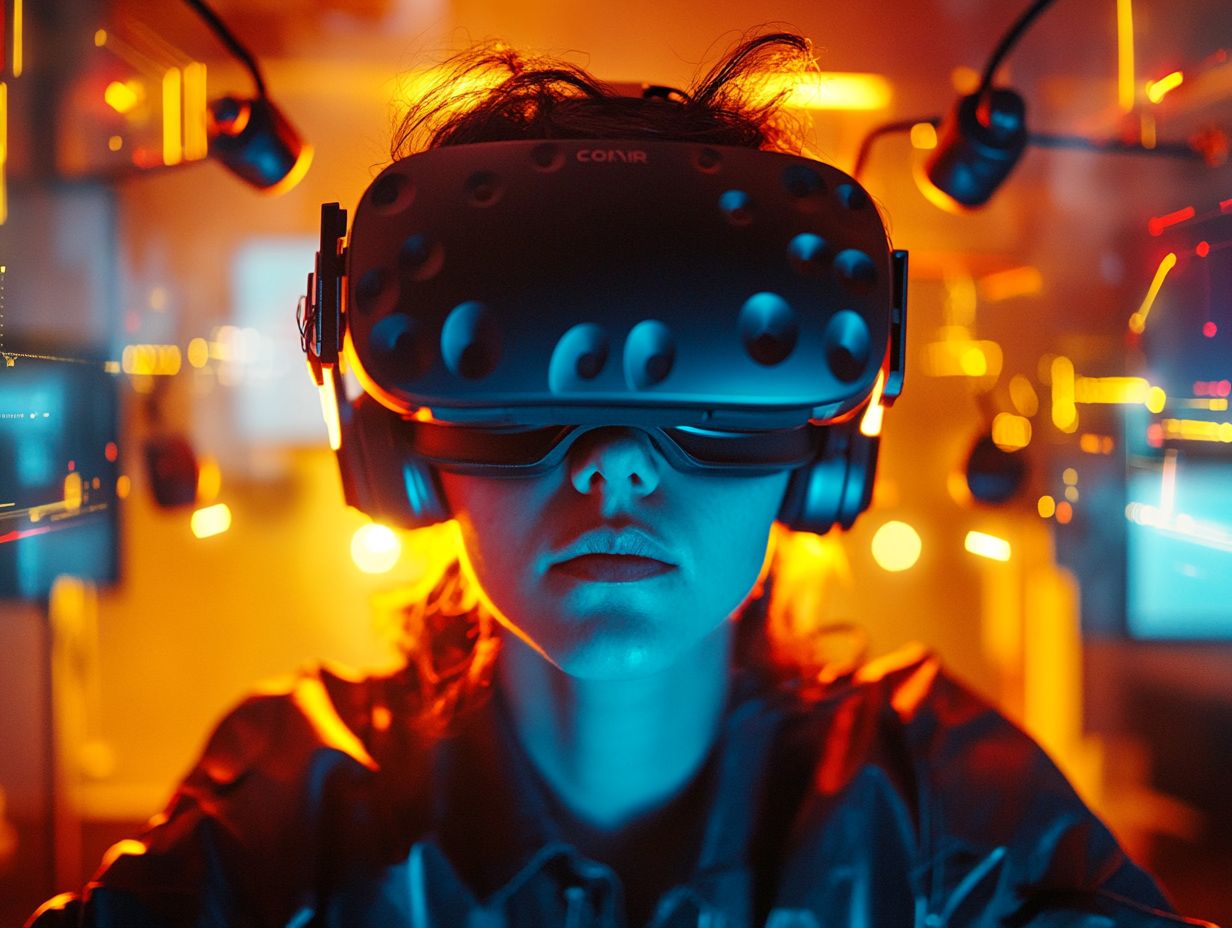
Definition and Types of VR Equipment
Virtual Reality (VR) equipment includes a diverse range of devices and technologies tailored to craft immersive experiences that transport you into captivating virtual realms. With the rapid advancements in VR technology, you can engage with simulations that vary from semi-immersive to fully immersive experiences, utilizing head-mounted displays (HMDs), which are devices worn on your head to display VR content, and stunning 3D graphics to enhance realism.
The evolution of VR has also opened the door to augmented reality, seamlessly blending digital elements with the real world and transforming a multitude of industries and applications.
Among the most sought-after options are the Meta Quest 2, Oculus Rift, and HTC VIVE headsets, each boasting unique features that cater to your specific preferences. For example, the Meta Quest 2 shines with its standalone capabilities and wireless freedom, while the Oculus Rift offers a connected experience that delivers robust graphics performance.
In the realm of truly immersive VR, haptic feedback and spatial audio play pivotal roles in elevating your sense of presence, allowing you to feel and hear your surroundings with remarkable clarity. Non-immersive setups, like desktop simulations, might lack these advanced features, yet they still offer substantial engagement and interactivity.
Exploring the various forms of VR technology gives you the power to select the experience that best aligns with your needs, ensuring an adventure tailored just for you.
How VR Equipment Works
Grasping the intricacies of VR equipment is crucial for elevating the immersive experience it offers. At the heart of VR technology is the head-mounted display (HMD), which employs motion tracking to adapt the visual perspective in real-time to your movements, creating a fluid interaction within the virtual environment.
When paired with AI-powered software, these systems can produce strikingly realistic simulations that not only captivate you but also significantly enhance your level of engagement.
Basic Components and Functionality
The fundamental components of VR technology include the head-mounted display (HMD), motion tracking sensors, and spatial audio systems, all meticulously crafted to deliver an immersive experience tailored just for you. Each element plays a critical role in facilitating seamless interactions within digital landscapes everything from the stunning visuals provided by the HMD to the precise motion tracking that ensures your every movement is mirrored in the virtual environment.
Haptic feedback elevates this experience even further, offering tactile sensations that replicate real-world interactions. Together, these elements create a cohesive environment that transports you to a realm where sight, sound, and touch intertwine.
For example, the Meta Quest 2 combines high-resolution displays with advanced motion sensors to translate your head and hand movements into an authentically responsive digital space. On the other hand, the Varjo XR-4 takes it up a notch with superior visual clarity and precision tracking, bringing intricate details to life in your virtual experiences.
Both devices have spatial audio systems. These create a three-dimensional sound experience, allowing you to pinpoint the direction of sounds, which deepens your immersion and engagement in these simulated worlds.
Explore the Exciting Categories of VR Technology
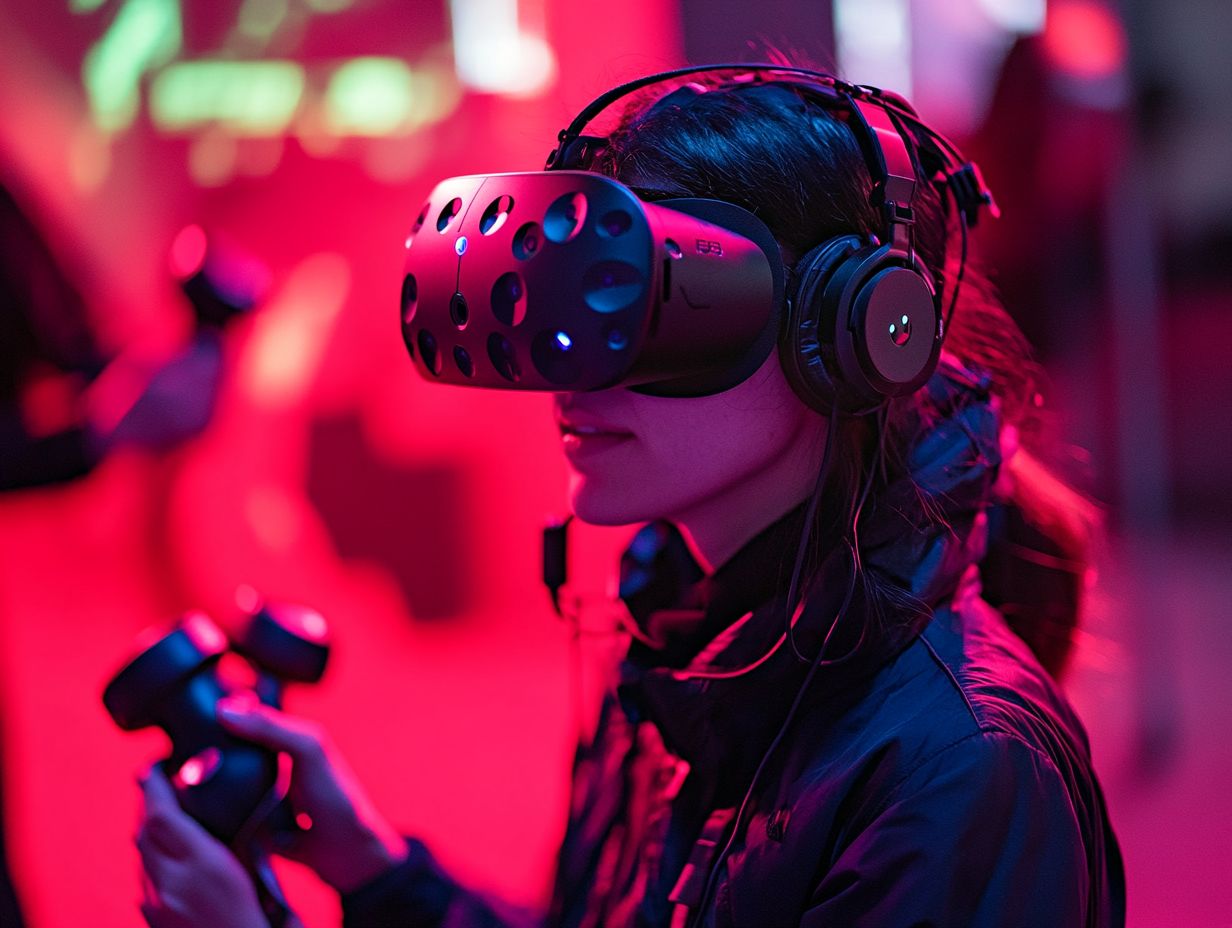
VR technology offers several distinct categories, each providing unique levels of engagement and interaction.
Fully engaging VR delivers the most captivating experience, using setups that transport you into entirely virtual environments.
Semi-immersive VR blends the real and virtual worlds, creating a tailored experience just for you.
Non-immersive VR uses traditional screens and interfaces, allowing you to interact with 3D graphics without full immersion. This makes it appealing to a broader audience.
Overview of Headsets, Controllers, and Tracking Systems
The world of VR technology relies on headsets, controllers, and tracking systems that work together to elevate your gaming experience.
With headsets like the Oculus Rift and HTC VIVE, you enjoy stunning high-definition visuals and spatial computing capabilities.
Specialized controllers empower you to make precise movements in the virtual realm, while tracking systems capture your movements in real-time.
As you explore amazing digital landscapes, you ll find a variety of headset options, including standalone devices like the Meta Quest, which offer ultimate portability and convenience.
Each headset has unique specifications field of view improves your peripheral vision, and resolution affects visual clarity. These details are essential for a truly engaging experience.
Don’t underestimate controllers; they range from motion-sensitive devices to those with haptic feedback, enhancing your gameplay.
The sophistication of tracking systems, whether outside-in or inside-out, is vital for accuracy and responsiveness. This makes your VR experience captivating and realistic.
Applications of VR Equipment
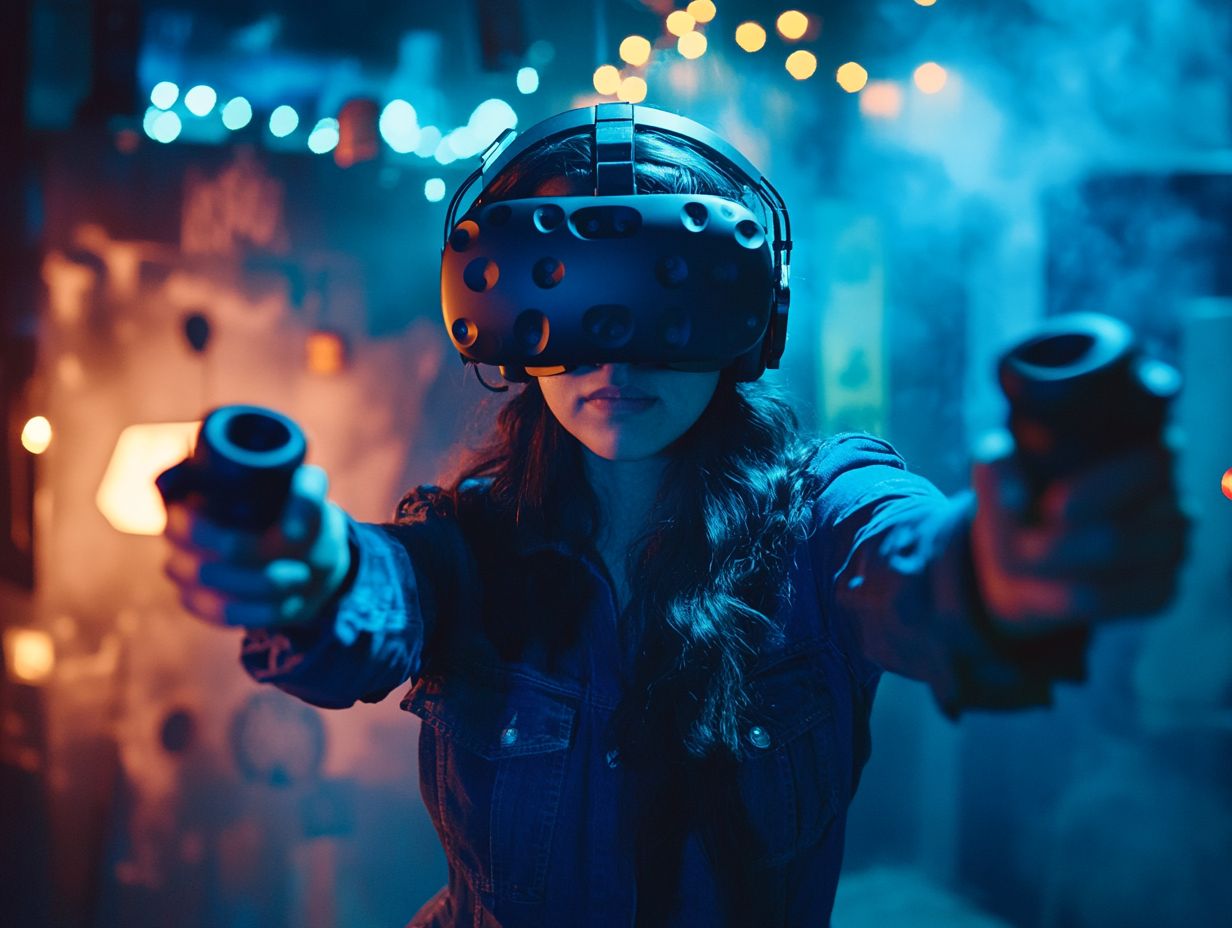
VR equipment spans various applications across multiple fields, transforming how you engage with information, training, and entertainment.
In healthcare, VR technology improves telehealth and training simulations, allowing medical professionals to practice in realistic scenarios.
The gaming industry also benefits significantly, creating interactive environments that captivate you in a digital landscape, boosting engagement and learning outcomes.
Industries and Uses for VR
Various industries embrace VR technology for its remarkable ability to craft engaging experiences that enhance training and interaction.
In healthcare, VR is used for training simulations, enabling practitioners to develop their skills in a risk-free environment.
The entertainment industry fully leverages VR, creating immersive experiences in interactive gaming that offer unparalleled engagement.
For instance, manufacturing companies use virtual reality for safety training, allowing workers to navigate complex machinery without real-world risks.
In education, VR transforms traditional classrooms into vibrant virtual spaces, allowing students to explore subjects interactively, significantly boosting retention and understanding.
The benefits of these applications are profound, leading to enhanced training outcomes that improve skill acquisition and foster a deeper connection to the material. Ultimately, this enriches your experience in truly transformative ways.
Choosing the Right VR Equipment
Selecting the right VR equipment is crucial for maximizing your immersive experience and ensuring satisfaction. Key factors include the various types of VR headsets available, their specifications, and compatibility with VR technology and AI-powered software.
Understanding your primary purpose whether for gaming, training, or healthcare will greatly influence your equipment choice and guide you toward the best fit for your needs.
Ready to dive into the world of VR technology? Explore your options today for your personal or professional needs!
Factors to Consider Before Purchasing
When purchasing VR headsets, consider several critical factors to ensure optimal performance and a feeling of being inside the game. Pay attention to the headset’s resolution, field of view, and compatibility with software applications, especially for interactive gaming or training simulations.
Assess your budget alongside the specific features that matter most to you, such as haptic feedback or spatial audio.
Comfort during long use is essential. Ensure the headset feels good to wear, as pressure points can lead to discomfort.
Delving into technical specifications like refresh rate and tracking capability will significantly affect your immersion in virtual environments.
Don t overlook compatibility with your existing systems, like gaming consoles or PCs. Ensuring the headset integrates seamlessly into your current setup is crucial.
When comparing models, create a checklist of desired features and read user reviews. This approach offers valuable insights and guides you toward making an informed choice.
Frequently Asked Questions
What is VR equipment?
VR equipment, short for virtual reality equipment, refers to hardware and software devices used to create and experience virtual reality environments. When choosing the right setup, it’s important to know what to look for in VR equipment.
How does VR equipment work?
VR equipment uses specialized hardware and software to create a 3D immersive environment experienced through a headset or other display device.
What are the main components of VR equipment?
The main components include a virtual reality headset, controllers or input devices, and a powerful computer or gaming console to run the VR software.
How does a VR headset create a virtual reality experience?
A VR headset creates a virtual reality experience by displaying two separate images to each eye, mimicking how our eyes perceive depth. This creates a sense of 3D depth and immersion in the virtual environment.
What types of VR equipment are available?
Several types of VR equipment exist, including tethered headsets that require a powerful computer, standalone headsets with built-in computing capabilities, and mobile VR headsets that use smartphones for display.
Can VR equipment be used for purposes other than gaming?
Yes, VR equipment can also be used for training simulations, educational experiences, and virtual tours of real-world locations.
Start your VR adventure today!


